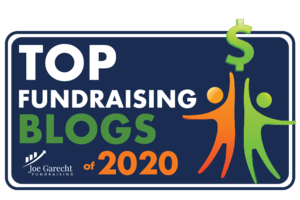One out of ten children will be sexually abused by the age of 18 in the US. What does that have to do with nonprofit management or fundraising? Absolutely nothing. So, why am I mentioning it?
I’m sharing that alarming statistic with you as part of a continuing tradition here at Michael Rosen Says… Each April, I devote a blog post recognizing National Child Abuse Prevention Month. Once again, I’m using this space to highlight a serious issue and share tips for protecting children.
Child sex abuse is a horrible crime. You already know that. However, do you know that sex abuse survivors continue to feel the effect for years? Here are just some of the terrible consequences, according to the Centers for Disease Control:
Experiencing child sexual abuse is an adverse childhood experience (ACE) that can affect how a person thinks, acts, and feels over a lifetime, resulting in short- and long-term physical and mental/emotional health consequences.
Examples of physical health consequences include:
- unwanted/unplanned pregnancies
- physical injuries
- chronic conditions later in life, such as heart disease, obesity, and cancer
Examples of mental health consequences include:
- depression
- post-traumatic stress disorder (PTSD)
Examples of behavioral consequences include:
- substance abuse including opioid use
- risky sexual behaviors, such as unprotected sex, sex with multiple partners
- increased risk for suicide or suicide attempts
Another outcome commonly associated with child sexual abuse is an increased risk of re-victimization throughout a person’s life. For example, recent studies have found:
- Females exposed to child sexual abuse are at a 2-13 times increased risk of sexual victimization in adulthood
- Individuals who experienced child sexual abuse are at twice the risk for non-sexual intimate partner violence
The odds of attempting suicide are six times higher for men and nine times higher for women with a history of child sexual abuse than those without a history of child sexual abuse.”
Sex abuse affects children of every race, income level, religion, and region. In 91 percent of the cases of child sex abuse, the child or the child’s family knows the perpetrator. That means teaching children about “stranger danger” is not enough to keep them safe.
Fortunately, organizations exist that can educate us about what we can do to protect children and what we can teach them so they can protect themselves. One such nonprofit organization is the Philadelphia Children’s Alliance, which brings justice and healing to children who have been sexually abused. PCA is one of my favorite charities, and I’m honored to have served on its board.
PCA recently stated:
It’s never too early to start talking to children about consent. Kids need to be empowered with the knowledge that THEY are the BOSS of their BODY and the importance of TELLING if someone violates their personal boundaries.”
Because teaching boundaries is so important, PCA shared a two-minute video that it believes does a good job of explaining bodily autonomy and consent to kids of all ages. You can watch it here:
PCA and other childcare professionals understand that it is essential to respect each child’s personal space. PCA explains:
Very often, a mom or dad will say something like this to their child: ‘Go give grandma a hug and kiss.’ If the child refuses, the parent or the intended kiss recipient will become increasingly pleading and/or demanding. While perfectly innocent and seemingly harmless, this teaches children a dangerous lesson: Their body is not theirs to control.
Instead, respect your child’s personal boundaries. Let them know it’s okay for them to pick and choose with whom they will have physical contact. Don’t inadvertently send them the message that adults have power over them when it comes to contact. Make sure they understand they can say no to adults.”
The staff at PCA has put together a valuable article: “10 Tips for Protecting the Children You Love from Sexual Abuse.” If you have young children, family members or neighbors with young children, or if young children are in your life at all, it is worth your time to take a few moments to read the free tips article.
If you’d like to know how to spot a child molester and what you can do to stop them, read my post: “Can You Spot a Child Molester? Discover the Warning Signs.”
For a free, 30-minute course presented by the nonprofit Darkness to Light, check out: “Protecting Children During a Crisis.”
There’s one more thing you can do. Will you please share this post, the video, or the tip sheet with others? Will you share the material on social media? I never ask readers to share my posts. However, protecting children is a communal responsibility. So, I’m making an exception, and I hope you’ll help spread the information. You can help a child. You can be a hero.
Together, if we all do our moral duty, we can help protect children everywhere. Will you join me?
To report child abuse or to connect with local organizations that can help you, call or text the Childhelp National Child Abuse Hotline at 1-800-4-A-CHILD (1-800-422-4453). You can also live chat online by clicking here.
That’s what Michael Rosen says… What do you say?








